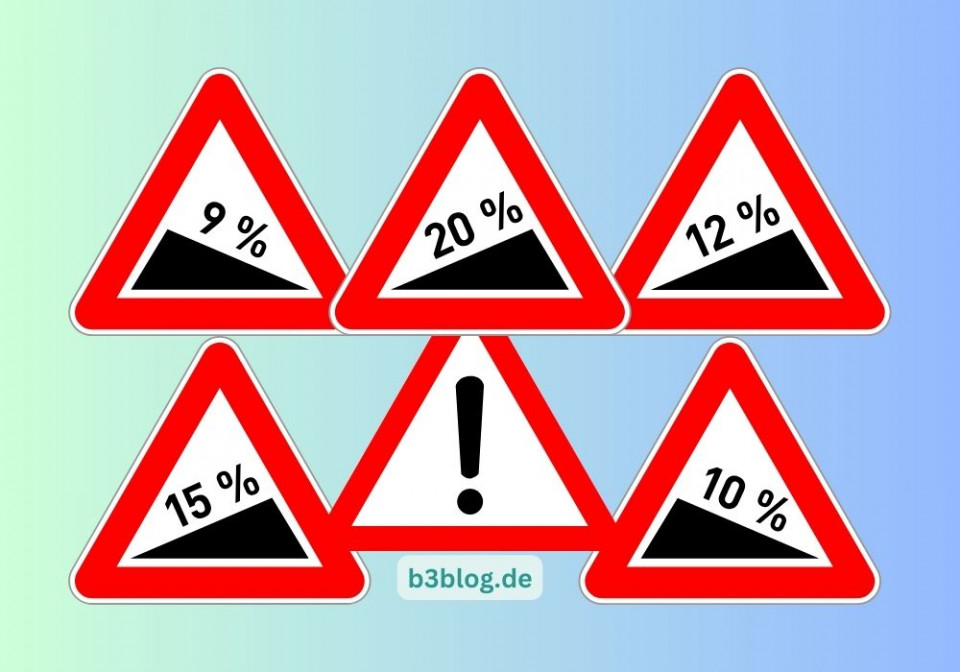How does my address get into the navigation system?
Have you recently moved house and now live in a new build? Then you know the problem: the parcel with the urgently needed tools or the pizza you ordered hours ago (you have to eat something while the kitchen equipment is a long time coming) never arrives. Not because you've fallen for scammers, but because unfortunate service providers or even relatives and friends or, in the worst case, the emergency services couldn't find your address.
Welcome to no man's land
If the street in which the new address is located has already existed for a few years, then the chances are good that navigation systems and online maps will at least register the street and only fail when it comes to the house number you are looking for. However, if the new building, whether a detached house or a rental apartment, is located in a newly created street, then the search for the new address using the usual digital means is hopeless. Anyone who wants to visit you will wander around in address no-man's land - even though you yourself are desperately shouting: Look, it's true, I really do live here!
"Registration not possible"
Laborious delivery and delivery circumstances are only one side of the relocation coin. The re-registration of usual services makes things even more difficult: the mobile phone provider refuses to accept your change of address and you cannot conclude new contracts because you cannot submit the required online form - it does not accept your address. You can use your ID card with the new address to prove that you really live at the supposedly non-existent address, but what an extra effort for everyone involved in otherwise digitalized processes.
The path of the address into the map systems
It should be clear how important it is to record the new address in data systems and process it digitally. But how exactly does the new address find its way into the digital world? Let's take a look at Google Maps, the popular and frequently used service of a commercial company, as an example. How a missing location can be entered can be quickly researched on the Internet, is very easy for so-called Local Guides and is explained here on the Google help pages.
The term "location" is ambiguous: Google Maps refers to places of interest, cafés or other local businesses. You can also find out how to add a new private address to Google Maps in the help section. As a registered Local Guide (this is a prerequisite), you only need to follow the steps listed. A new address, new street, new house number can even be reported from an Android smartphone.
From the address to the code
Where there is an address for a house or apartment, a code is not far away. The term GPS (short for Global Positioning System) is familiar to many as a satellite navigation system for determining a geographical location. This is not only useful for outdoor activities where you don't want to get lost, GPS has become an integral part of traffic routes and transportation on land and water. But in our moving example, the focus is not on location determination as such. It is about the question of how geographical data can be processed in such a way that it is clear and unambiguous. And the pizza delivery man finds your front door.
This requires coding, such as the OLC (Open Location Code), also known as the Plus Code. How such an address code works in detail is explained in the Wikipedia article Open Location Code or in Plus Codes for Google Maps. Another coding system is what3words.
Open Street Map and address register
There are many areas of application for well-prepared geographical data. Austria, for example, has relied on an official Address Register since the beginning of the millennium, which records all addresses in Austria using a standardized coding process. This register does far more than a mere land register. The address data can be made available by the Austrian Federal Office of Metrology and Surveying for a wide range of tasks, from geomarketing and market research to target group analysis, location and route planning, to name but a few.
The task of OpenStreetMap is completely different. The project, which has been in existence since 2004, collects location data with the aim of creating a free map of the world. The project is based on openness and can be used by anyone without license fees. This in turn also means openness when it comes to contributing to the project. Once you have registered, you can also enter your own new home address.
Data, processes, results
As the examples show, there are very different use cases. The focus is always on the question of how processes can be prepared for specific objectives, which processes are necessary for this and how long they take. Digital data and digital use are of little use if the steps are analog or not clearly defined. This is where we come in with Pro:Hive: Data must be processed optimally in terms of transparent use that serves the common good.


